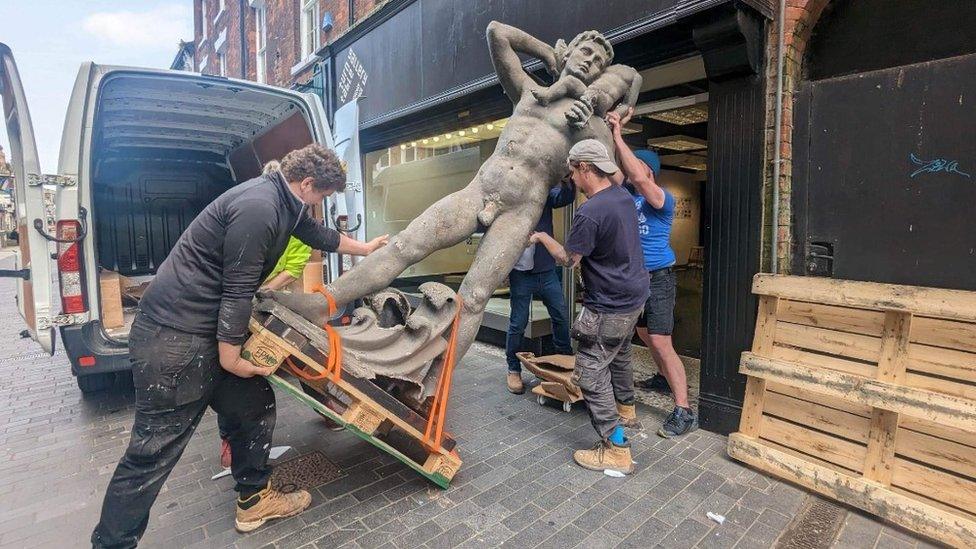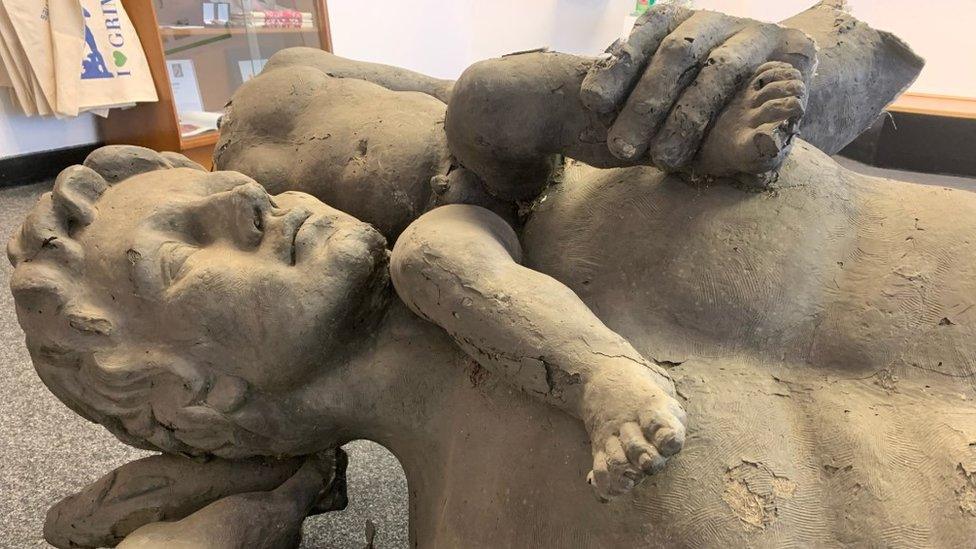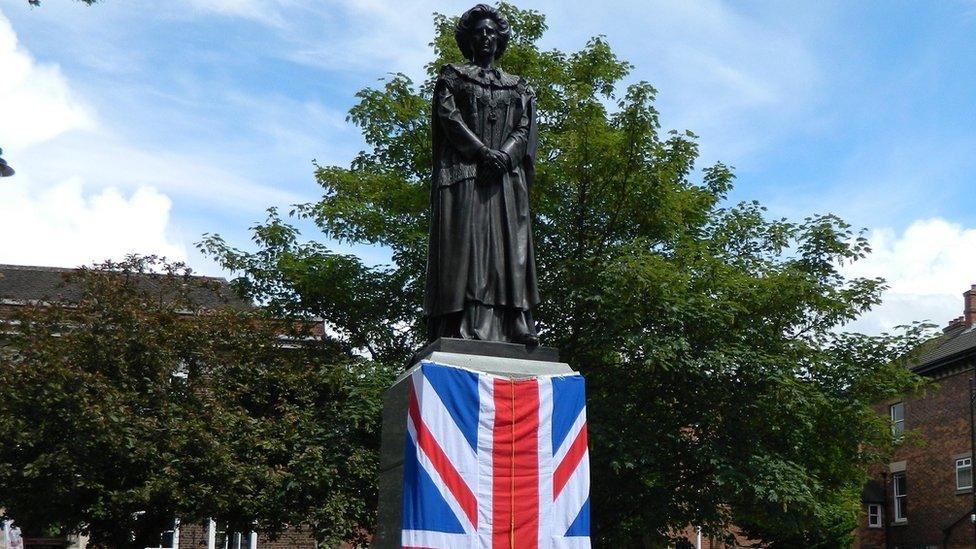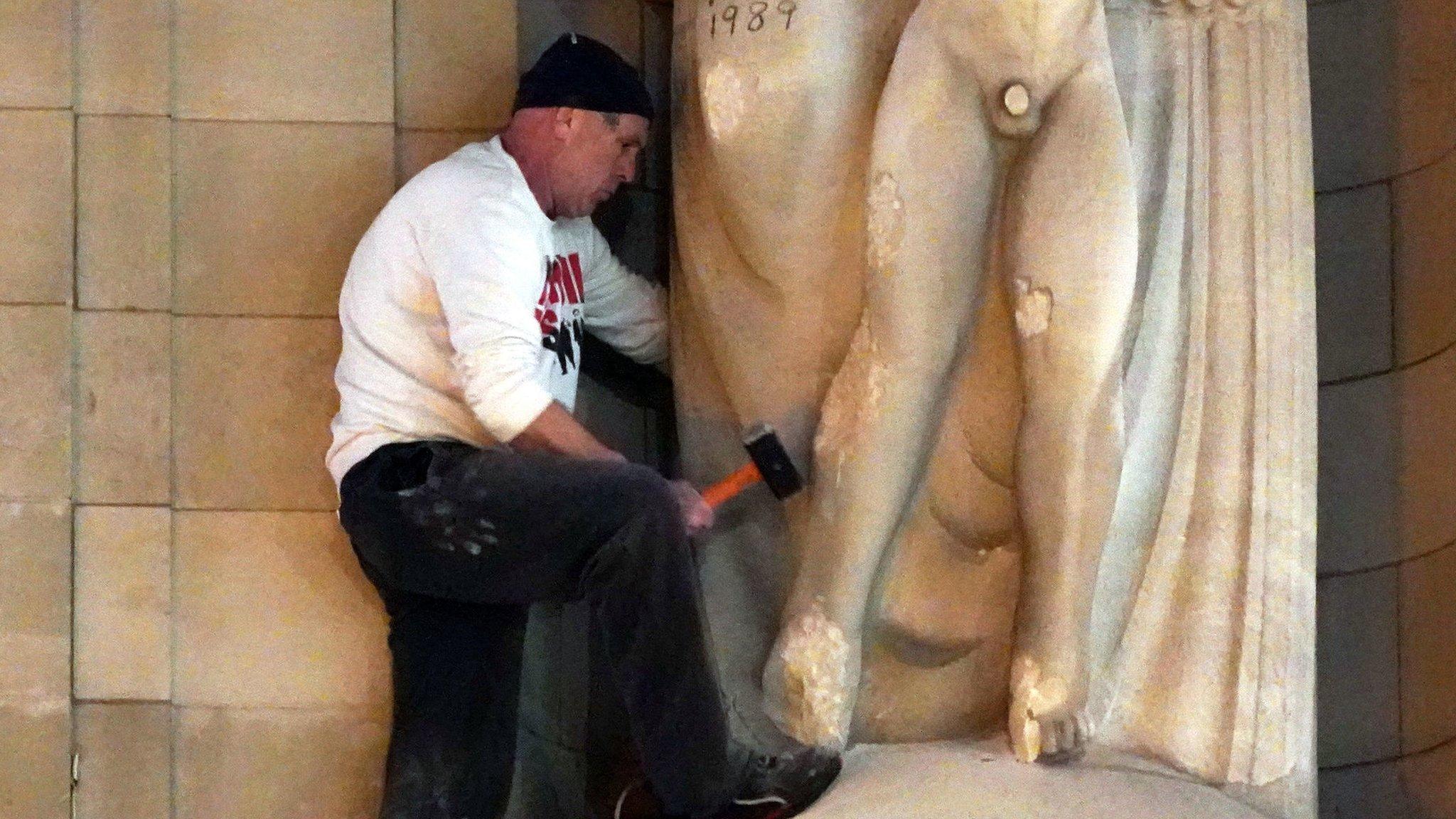Grimsby's Grim and Havelock statue to go on show before restoration
- Published

The statue has been in storage since 2006, when it was removed to protect it from further vandalism
The vandalised statue of a legendary Viking and a child is to go on show in Grimsby again so people can see it one last time before it is restored.
The iconic Grim and Havelock statue stood in the town from 1973 until 2006, when it was removed due to damage.
It shows Grim, a Danish fisherman, rescuing a young Havelock, a Danish prince, off the Lincolnshire coast.
The Douglas Wain-Hobson artwork will be on show at the Turntable Gallery from 20 May until 10 June.
The sculpture is a key part of an exhibition called The Wake which shares stories of the legend, alongside a timeline showing how the sculpture became part of the history of Grimsby.

The statue will be on show at the Turntable Gallery from 20 May until 10 June
Before being put into storage in 2006, the statue had stood in front of Grimsby Institute for over three decades since being unveiled on 19 May 1973.
It had been funded with donations raised by art students at the former Grimsby College.
However, it was removed following repeated attacks of vandalism which saw, among other things, Grim's arm and foot snapped off and Prince Havelock's head removed.
The new exhibition featuring the statue has been curated by the Turntable Gallery's owners, Darren Neave and Dale Wells.
They said they wanted to restore the damaged artwork and put it back on show in the town.
The pair, along with local organisation The Equality Practice, formed to repair the artwork and have already been granted £100,000 by The National Lottery Heritage Fund to carry out the work.

Grim's arm and foot were among parts of the statue which had been damaged - along with Prince Havelock's head
Mr Wells said: "This project represents more than the return of a statue, it represents our own personal journeys through the restoration of high art to Grimsby, and the ensuing renaissance that our town is hurtling towards.
"Grim saw the potential for growth here - and so should we."
The Heritage Project said restoring the statue was "a chance to not only reassert some civic pride in our town and its long heritage, but also as a chance to promote positivity around immigration and inclusion in our area".
According to research conducted by Mr Neave and his fellow artists, the statue was "gifted to the people of Grimsby".
Ideas for its restoration included using a life model to recreate it, casting it in bronze.
Mr Neave said once repaired, the statue should be kept indoors.

Follow BBC East Yorkshire and Lincolnshire on Facebook, external, Twitter, external, and Instagram, external. Send your story ideas to yorkslincs.news@bbc.co.uk, external.
Related topics
- Published31 August 2022

- Published31 May 2022

- Published12 January 2022

- Published15 August 2021
